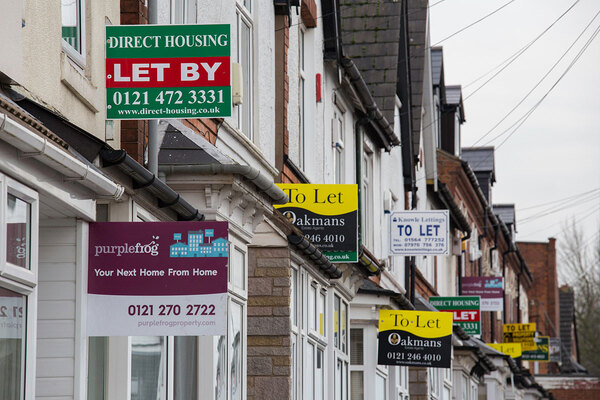You are viewing 1 of your 1 free articles
 Jules Birch
Jules BirchThe LHA cap raises problems for general needs housing too
 Jules Birch
Jules BirchIf you were looking to design a policy to penalise the poorest families paying the cheapest rents, it would be very hard to come up with something better than the Local Housing Allowance (LHA) cap.
My feature in Inside Housing this week looks at the situation in Wales. I already knew that the impact would be severe in deprived areas like the South Wales Valleys because of their very low LHA rates, but the more people I talked to the worse the implications seemed to be.
Even in areas with higher LHA rates there are growing worries about the long-term impact. Ask people what the number one threat to their business plan is and everyone will say welfare reform: for some Universal Credit is the biggest worry, but others say the LHA cap because of its effect not just on tenants and business plans but also on future development.
“The LHA cap raises a myriad of issues before you even start to consider the impacts on supported and sheltered housing.”
I’m talking here about the cap as it applies to general needs housing when it is introduced in 2019. There are three main problems: the impact on the under-35s who are single with no children; areas where social rents are already above or close to LHA rates; and the effect on pensioners.
So first the under-35s. The impact of them being restricted to the Shared Accommodation Rate (SAR) will be felt across Britain but there are four Broad Rental Market Areas (BRMAs) in Wales where the SAR is less than £50 a week.
One housing association calculates that at these rates it would have to find a way to build a one-bed flat for less than £17,000 including the cost of the land.
Little wonder that many are already looking at pilot projects to make sharing work, including changing the expectations of people on the waiting list, and to find cheaper ways to develop.
Next, in low LHA areas, it is not just the SAR that is a concern but the one-bed, two-bed and even three-bed rates as well. Six BRMAs have a one-bed LHA of less than £70 a week.
That means a shortfall even against the lowest social rents and the cap also applies to any service charges on top of rents.
Little wonder that many landlords are looking in detail at their policies on rents and allocations and at the way they design and develop new homes as they work out how to respond.
These problems will become even bigger over the next few years because LHA rates are frozen until 2020.
Policy on social rents is devolved to Wales and unlike in England they are still rising by an inflation-plus formula. With the LHA cap Westminster is effectively taking back control.
However, there is another sting in the tail. LHA rates cannot go up but they can still go down and once they do they cannot go up again.
In February Cartrefi Cymunedol Gwynedd, a stock transfer association in North Wales, announced rent increases in line with its policy of converging rents across the county.
A week later LHA rates were announced for 2017/18. The area has two BRMAs and in South Gwynedd the two-bed LHA was cut by 5% to just £80.50. This poses major challenges for rents policy, future development and the business plan.
Housing associations that operate in more than one locality face similar issues with some BRMAs where LHA rates are comfortably higher than rents and others where the opposite applies.
Finally, pensioners. Remember when ministers justified the bedroom tax on the grounds that it was only fair to apply the same system for social tenants and private tenants?
It was a spurious argument for lots of reasons but they were talking about the way the LHA pays an allowance based on the number of bedrooms a household should be occupying.
But where pensioners were exempted from the removal of their ‘spare room subsidy’ there are no current assurances for the LHA cap, just soothing words from ministers about Discretionary Housing Payments (DHPs) (as usual) and pension credit.
“In a country that is meant to work for everyone the LHA seems to be becoming a policy that’s failing everyone.”
Mike Owen, chief executive of Merthyr Valleys Homes, outlined the potential impact in Merthyr Tydfil – and the inadequacies of DHPs – in a blog for Inside Housing last month.
The LHA cap raises a myriad of issues before you even start to consider the impacts on supported and sheltered housing.
Many of the same points will apply to the under-35s and pensioners around Britain, as well as to areas of northern England that also have low LHA rates. There will be others I’ve missed here. But I’ll end with two final points.
First, with two years to go before the cap applies, there is bound to be growing scrutiny of how LHA rates are set. This is not just about the freeze and the fact that rates are now so far below the 30th percentile or what happens after 2020.
The process is not exactly transparent but one reason that LHA rates are so low in parts of Wales seems to be that there are so few private rented homes to set them with. A small sample in which landlords may also be under-declaring their rents to authorities they see as synonymous with the taxman will nonetheless determine rates for social tenants.
In Brecon and Radnor that could mean that a handful of rents for shared properties decide the shortfall faced by social tenants aged under 35 against an SAR of just £45.90 a week.
In Merthyr, it could mean that as few as four one-bed private rented properties of very poor quality are setting the LHA rates that will apply to 500 one-bed social rent homes.
One obvious response to that would be to make LHA rates reflect a sample of all rents in the area, not just private ones. But that cannot happen until 2020 and if it were applied to high-LHA areas too it would mean even bigger shortfalls for tenants.
Second, as I blogged a couple of weeks ago, the LHA was originally designed as an incentive for tenants to ‘shop around’ for a cheaper rent and save the taxpayer money.
The first cuts to it were bedroom caps that had the greatest impact in the most affluent areas with the highest rents such as central London. Ministers argued that it was unreasonable to expect the taxpayer to ‘subsidise’ people on benefit to live in areas unaffordable to people in work.
But the impact of the LHA cap will be the precise opposite: places that have the cheapest rents, usually because they are the most deprived areas with the fewest jobs, will be hardest hit.
In a country that is meant to work for everyone the LHA seems to be becoming a policy that’s failing everyone.









